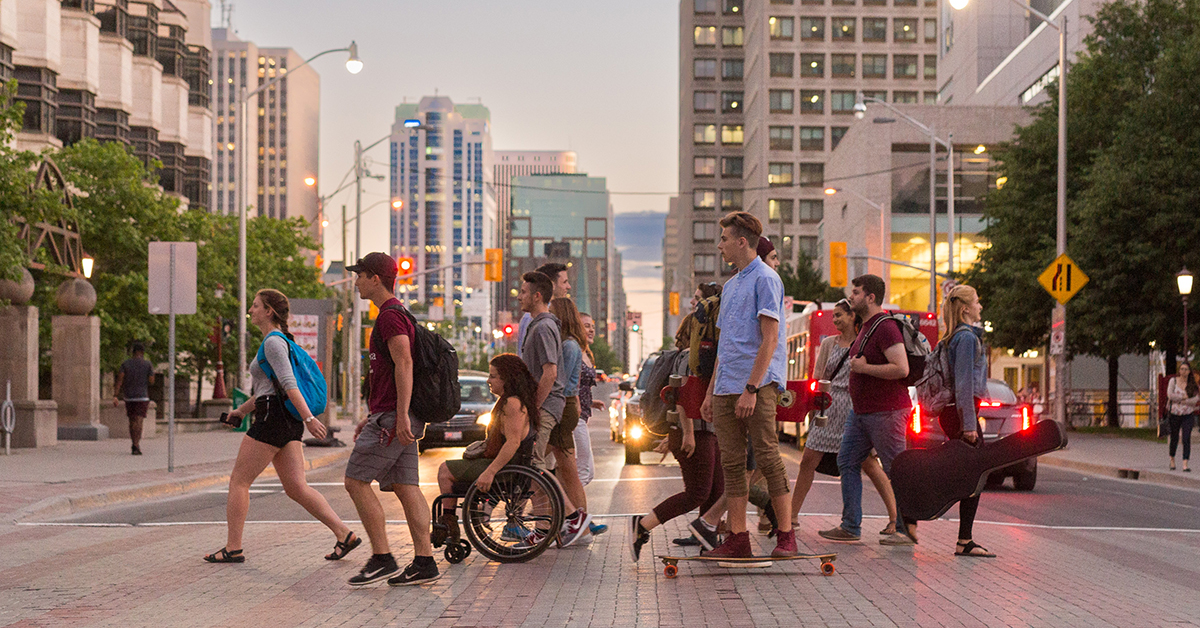The Human Rights Office seeks to ensure that persons with disabilities have genuine, open and unhindered access to University services, facilities, accommodations, communications, events, employment and public spaces by developing policies, practices and procedures that insure compliance with the AODA and providing information and advice to prevent incidents. It also runs the uOaccessible advisory committee.
What does accessibility mean for persons living with a disability?
Accessibility is a human right. It means that persons living with a disability can have access to the same rights, goods, services, facilities, housing, communications, events, jobs, public spaces and information, regardless of their disability.
For the University, it means helping to create a learning, living and working environment where everyone can find their place, feel included and flourish.
What influence can the University have on accessibility in society?
Unhindered access to bilingual postsecondary education offers a range of economic, cultural and social possibilities to persons with disabilities and their families. This access can also increase pools of applicants and the diversity of talent available to industry here and elsewhere. An accessible university encourages openness, knowledge enhancement and representativity in research, which helps develop innovative ideas and promote adoption of inclusive practices everywhere.
What are the challenges in making universities accessible?
Due to their complex funding structures, multiple options and learning spaces, and unique educational mission, universities sometimes have trouble interpreting and applying accessibility standards.
What should we watch for next?
New accessibility standards for postsecondary education are in the final stage of approval. These standards will help clarify and apply current standards in an educational setting. They will help create synergy between ministries and promote collaboration between ministries and educational institutions. Greater synergy will allow students with disabilities to find the services they need more easily throughout their studies, removing barriers between services to avoid gaps. The proposed recommendations also include measures to encourage postsecondary educational institutions to adopt proactive, transparent work processes and make informed decisions regarding accessibility and accommodation measures.
Could you give us some examples of these new requirements?
- Key academic requirements for all programs and courses are published, and all assessments are conducted based on these requirements.
- Evaluation tools are mentioned in the course syllabus.
- Students have time to get to know accessibility tools before they have to use them as learners.
- Adaptive measures (closed captioning, sign language interpretation, etc.) are in place for seminars, symposiums, talks and conferences.
- Funding programs include provisions for graduate students living with a disability.
- A shared fund for symposium accessibility is being created.
- Funding for measures supporting accessibility (sign language interpretation, support persons, etc.) enables students with a disability to get involved in leadership roles with decision-making bodies and in on-campus extracurricular activities.
Who can help make our university more accessible?
All our actions, choices and behaviours have a direct impact on accessibility at uOttawa. As Joe Gerstandt says, “If you do not intentionally, deliberately and proactively include, you will unintentionally exclude.”
Ask yourself these questions:
- What percentage of your budget is earmarked for accessibility?
- Do you consider accessibility in your purchases? In your communications?
- How do you assess the impact of your decisions on persons with a disability?
- How are persons with a disability included in your consultations? Research? Classes? Procedures? Project planning?
- Do your staff and volunteers know their legal responsibilities concerning accessibility? Do you know how to pinpoint, prevent and eliminate barriers to persons with a disability in your programs and services?
If you don’t have answers, the Human Rights Office can guide you as you consider these things.
The office is also looking for a new employee representative (ideally, a professor) living with a disability to join the uOaccessible advisory committee. If you’re interested, email us your CV and cover letter.
